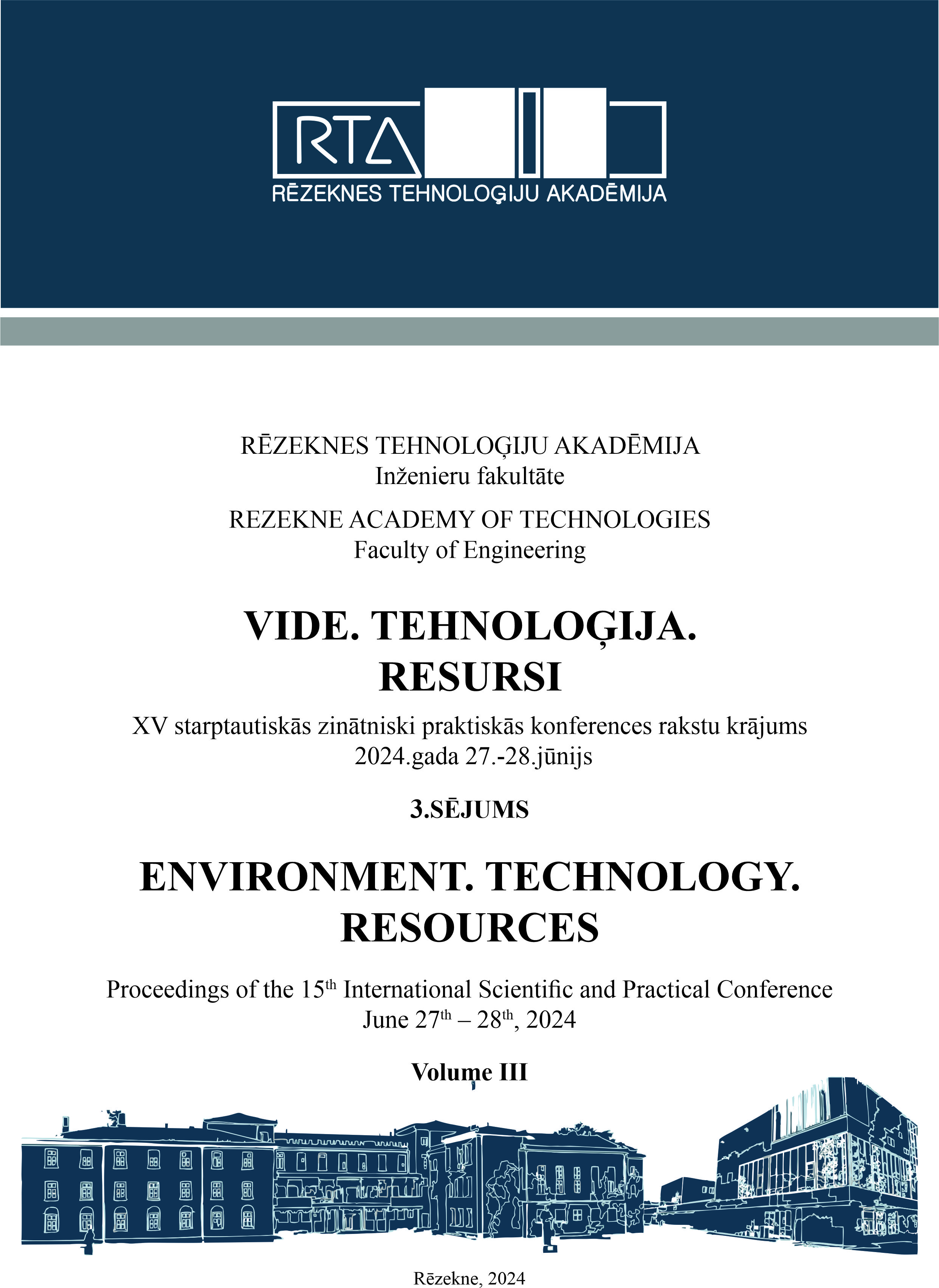THE FLUID FLOW SIMULATION OF THE THERMAL COMFORT IN THEATRE
DOI:
https://doi.org/10.17770/etr2024vol3.8121Keywords:
CFD simulation, theatre, thermal comfortAbstract
This paper examines the use of Computational Fluid Dynamics (CFD) simulations to improve thermal comfort in enclosed spaces, such as theatres, halls, and offices. Thermal comfort is crucial for occupant well-being and productivity, and is influenced by various factors, including air temperature, humidity, and airflow. To create tailored models for specific spaces, we suggest using CFD simulations to predict airflow patterns and temperature distribution, thereby identifying discomfort zones. This research aims to optimize thermal comfort and improve building design and energy efficiency by iteratively adjusting ventilation strategies. The practical applications of this approach include improved design and construction, as well as retrofitting existing buildings. To achieve this, CFD simulations should be integrated into the design phase to proactively address thermal comfort issues and achieve energy-efficient layouts. Customising CFD models for existing buildings allows for the analysis of airflow patterns and optimisation of ventilation strategies to enhance thermal comfort. HVAC systems can be evaluated using CFD to identify areas for improvement and select energy-efficient solutions, leading to enhanced energy efficiency. The benefits of these improvements include enhanced well-being and productivity, as improved thermal comfort can lead to better occupant health and focus, ultimately boosting productivity. Additionally, the risks of Sick Building Syndrome (SBS) can be reduced. CFD analysis can help reduce the risks of Sick Building Syndrome by optimizing ventilation and improving indoor air quality. In the future, it is recommended to integrate CFD simulations with Building Information Modelling for comprehensive thermal comfort analysis. This study highlights the potential of CFD to optimize thermal comfort in enclosed spaces by promoting occupant well-being and energy efficiency through iterative ventilation adjustments. It is important to adhere to established standards when integrating CFD.
Downloads
References
J. Yao, "Effect of variable ventilation modes on indoor thermal comfort and building energy consumption", International Journal of Low-Carbon Technologies, Volume 7, Issue 3, September 2012, Pages 187–191.
Andrzej Raczkowski1, Zbigniew Suchorab1, Przemysław Brzyski, Computational fluid dynamics simulation of thermal comfort in naturally ventilated room, MATEC Web of Conferences 252, 04007, (2019), https://doi.org/10.1051/matec conf/201925204007, CMES’18.
R Widiastuti, M I Hasan, C N Bramiana, P U Pramesti, CFD Simulation on the Natural Ventilation and Building Thermal Performance, INCRID 2019, IOP Conf. Series: Earth and Environmental Science 448 (2020) 012004, IOP Publishing, doi:10.1088/1755-1315/448/1/012004.
Naja Aqilah, Hom Bahadur Rijal, Sheikh Ahmad Zaki, A Review of Thermal Comfort in Residential Buildings: Comfort Threads and Energy Saving Potential, Energies 2022, 15, 9012. https://doi.org/10.3390/en15239012. https://www.mdpi.com/journal/energies
Jiying Liu, Shengwei Zhu, Moon Keun Kim, Jelena Srebric, A Review of CFD Analysis Methods for Personalized Ventilation (PV) in Indoor Built Environments, Sustainability 2019, 11(15), 4166; https://doi.org/10.3390/su11154166.
ANSI/ASHRAE Standard 55, "Thermal environmental conditions for human occupancy", 2020, ISSN 1041-2336, Available: https://www.ashrae.org/file%20library/technical%20resources/standards%20and%20guidelines/standards%20addenda/55_2017_c_20200731.pdf.
ISO 7730:2005, "Ergonomics of the thermal environment – Analytical determination and interpretation of thermal comfort using calculation of the PMV and PPD indices and local thermal comfort criteria", Third edition, November 2015, Available: https://www.buildingreen.net/assets/cms/File/ISO_7730-2005.PDF.
Pradip Aryal, Thananchai Leephakpreedab, CFD analysis on thermal comfort and indoor air quality affected by partitions in air-conditioned building, Applied Mechanics and Materials Submitted: 2015-12-02, ISSN: 1662-7482, Vol. 836, pp 121-126 Accepted: 2016-01-27, doi:10.4028/www.scientific.net/AMM.836.121.
SimScale, Last updated: October 25th, 2023, https://www.simscale.com/. F. R. Menter, Improved two-equation k-omega turbulence models for aerodynamic flows, NASA technical memorandum 103975, NASA Ames Research Center Moffett Field, CA, United States, October 1992, Available: https://ntrs.nasa.gov/api/citations/19930013620/downloads/19930013620.pdf
Downloads
Published
Issue
Section
License
Copyright (c) 2024 Lyuba Gyurova

This work is licensed under a Creative Commons Attribution 4.0 International License.



